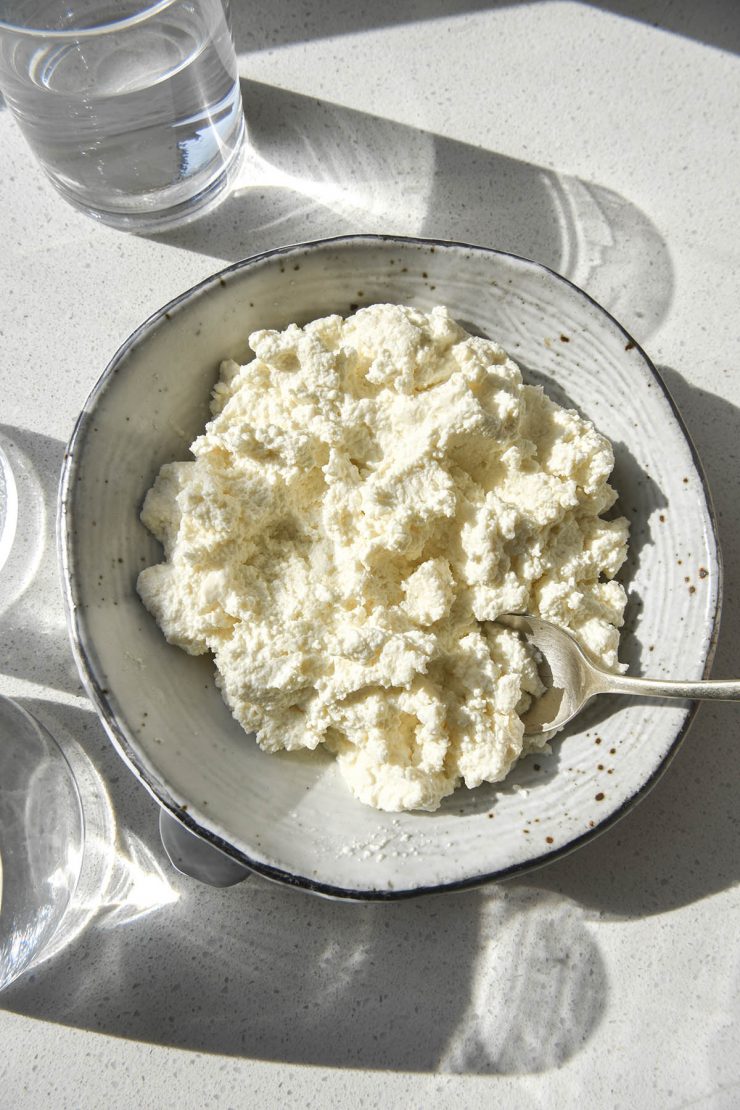
Today I’m adding a lactose free cottage recipe to my collection of lactose free dairy recipes. I have a few cottage cheese based recipes in the pipeline (like this green pasta) and I figured that not everybody would have access to lactose free cottage cheese. A quick google showed me how easy it is to make your own, and here we are! An easy, delicious lactose free cottage cheese recipe that is sinfully similar to my lactose free cottage cheese.
I should say that both methods are probably not the ‘authentic’ way to make either cheese. They are just a simple homemade lactose free option.
How to make lactose free cottage cheese
Lactose free cottage cheese is very easy to make. It is basically the same as making lactose free ricotta, except some cream or milk is added to the curd at the end.
To make lactose free cottage cheese, lactose free full cream milk is heated to just below a simmer. Once it is thoroughly heated through, vinegar is added to coagulate the curds. If the milk has been properly heated, the coats and whey should separate almost immediately.
White cloud like curds will form in the liquid, which should have turned an opaque lemon yellow. If not, keep the mixture on the heat and very gently stir until it does.
The mixture needs to rest off the heat for 10 or so minutes before it is poured through a muslin cloth or nut milk bag. You can keep the whey (liquid component) or allow it to drain off.
Now all that is left to do is add in some lactose free milk, cream or yoghurt until you reach your desired consistency. There it is: super easy and inexpensive lactose free cottage cheese.
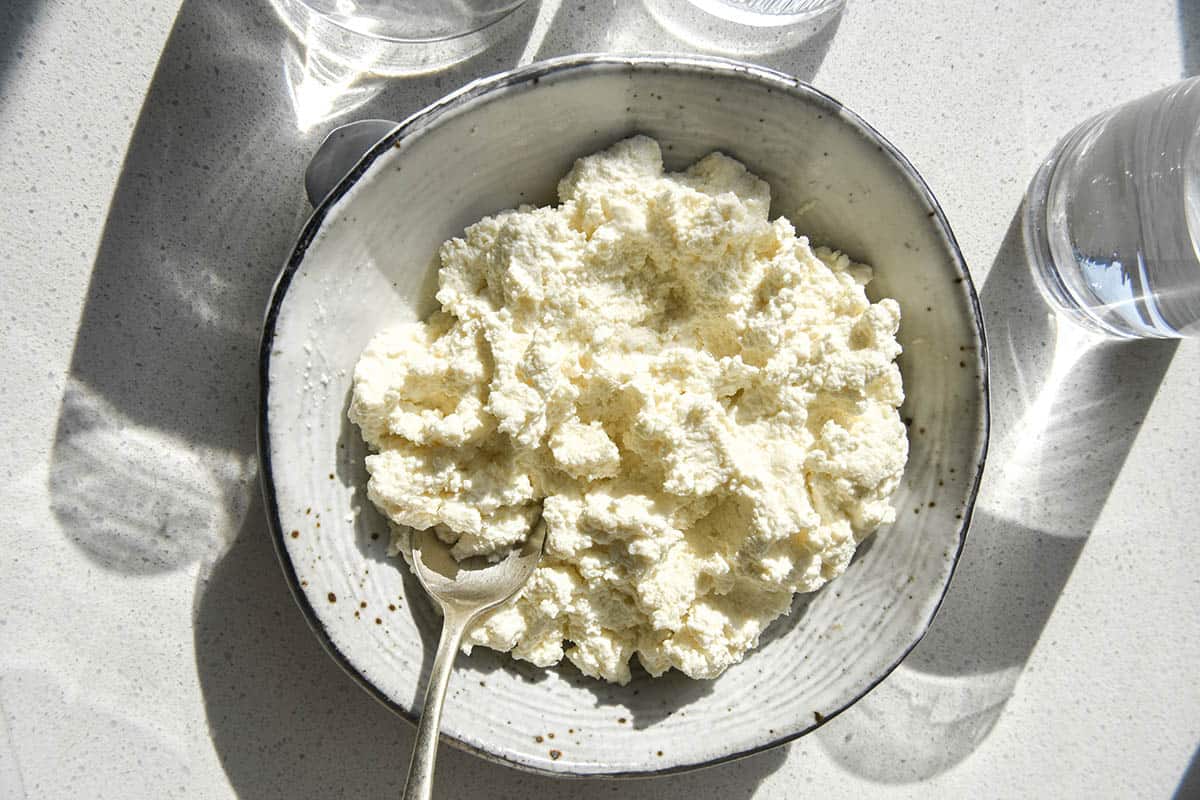
What is the difference between lactose free and dairy free?
Sometimes I get questions about why I would develop a lactose free version of a dairy product. Obviously these people have never had a bathroom incident after a milkshake, but I digress. Let’s quickly delve in a bit.
Lactose free and dairy free are two separate things. Lactose is a component of milk and dairy products that can cause digestive distress for some people. A dairy based product is made lactose free by adding an enzyme, lactase, that breaks down lactose in dairy.
Dairy encompasses all milk based products, whether or not they are lactose free. Dairy free products contain no milk or lactose at all. An example of dairy free milk is oat milk (sorry, I get this question a lot so I feel I need to be explicitly clear). If you have a dairy allergy or need a recipe that is dairy free or vegan, not just lactose free, this recipe is not for you.
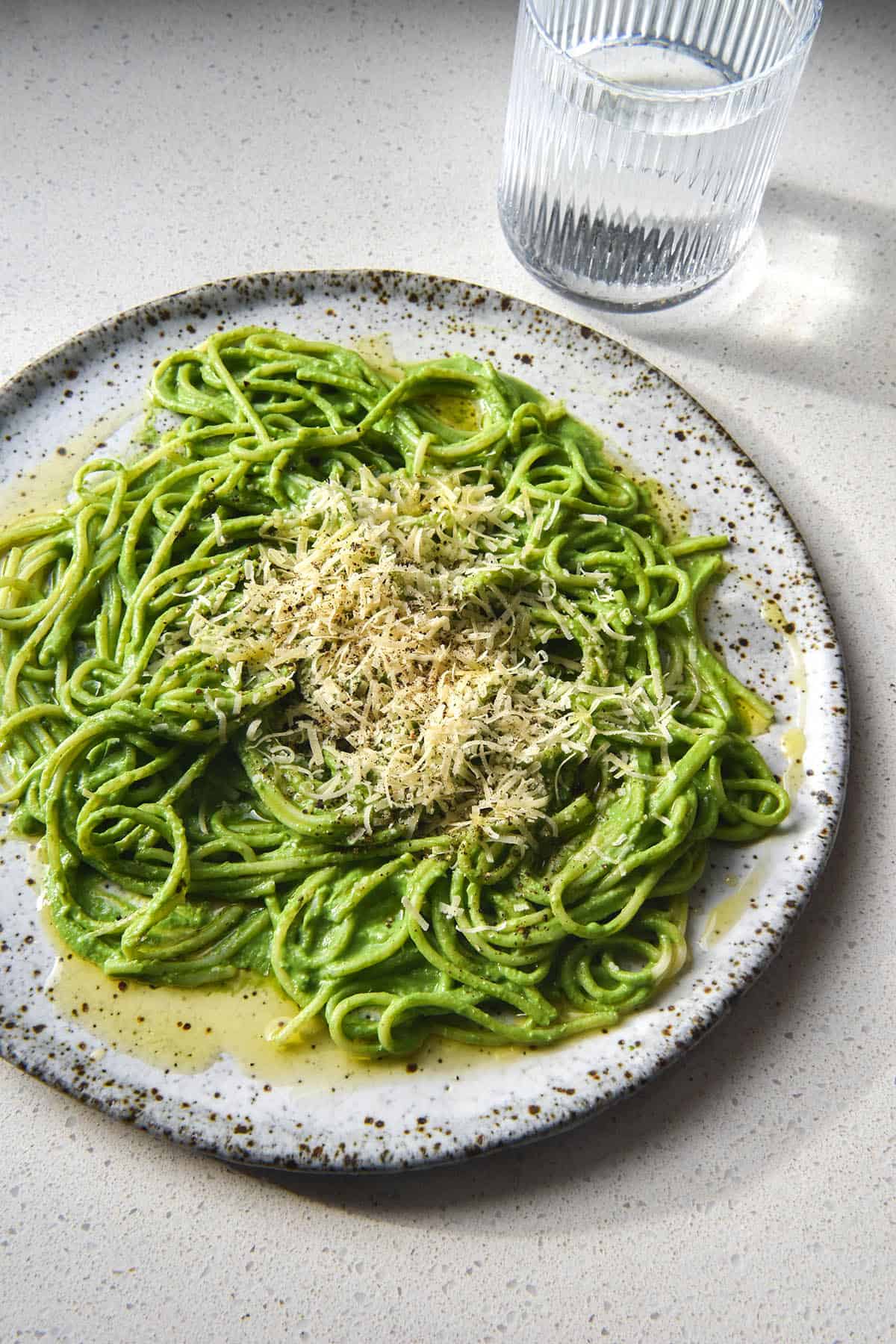
Method for your homemade cottage cheese
Making cottage cheese traditionally involves coagulating milk with rennet, as far as I can ascertain. Rennet is made from the stomach lining of calves, which is not appropriate for vegetarians. It’s also not something that your average home cook has on hand.
This lactose free cottage cheese, like my lactose free ricotta recipe, is not authentic. It uses lemon juice or white vinegar to coagulate the curds.
Once the milk hits a low simmer, the acid is added to form curds and whey. When thoroughly heated, the curds and whey will separate, the latter becoming a lemon coloured translucent liquid as opposed to an opaque milky liquid.
After leaving the mixture to sit for 10-15 minutes, it is strained into a nut milk bag or muslin cloth.
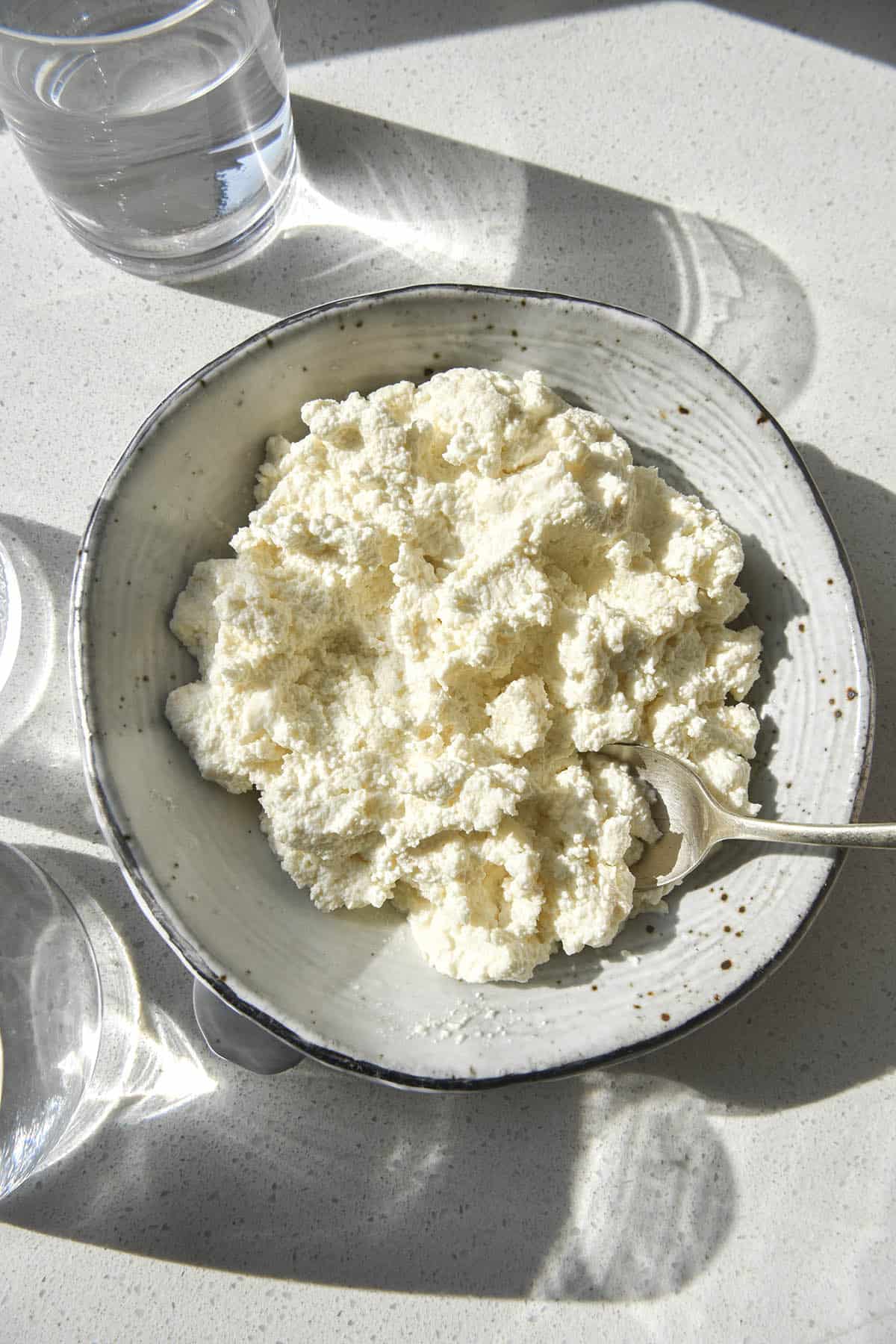
What are the differences between lactose free ricotta and lactose free cottage cheese making?
These homemade, not quite authentic recipes for lactose free dairy differ in a few ways. While the initial process is the same, what happens after differs slightly. Firstly, ricotta needs to be strained longer than cottage cheese (depending on how thin you want it). Cottage cheese contains more liquid than ricotta.
Secondly, with this DIY style of cottage cheese, it’s important to be careful when straining or stirring. The curds will easily disintegrate into a ricotta like smooth-ish mixture when stirred or interfered with. They don’t hold up that well when compared to store bought cottage cheese. So, if little lumps of curd are important to you, stir carefully.
Thirdly, a second form of lactose free dairy is added to give the cottage cheese creaminess and that traditional mouthfeel. I like using lactose free full cream to make it extra rich and delicious. You could also use a lactose free yoghurt or even extra lactose free milk.
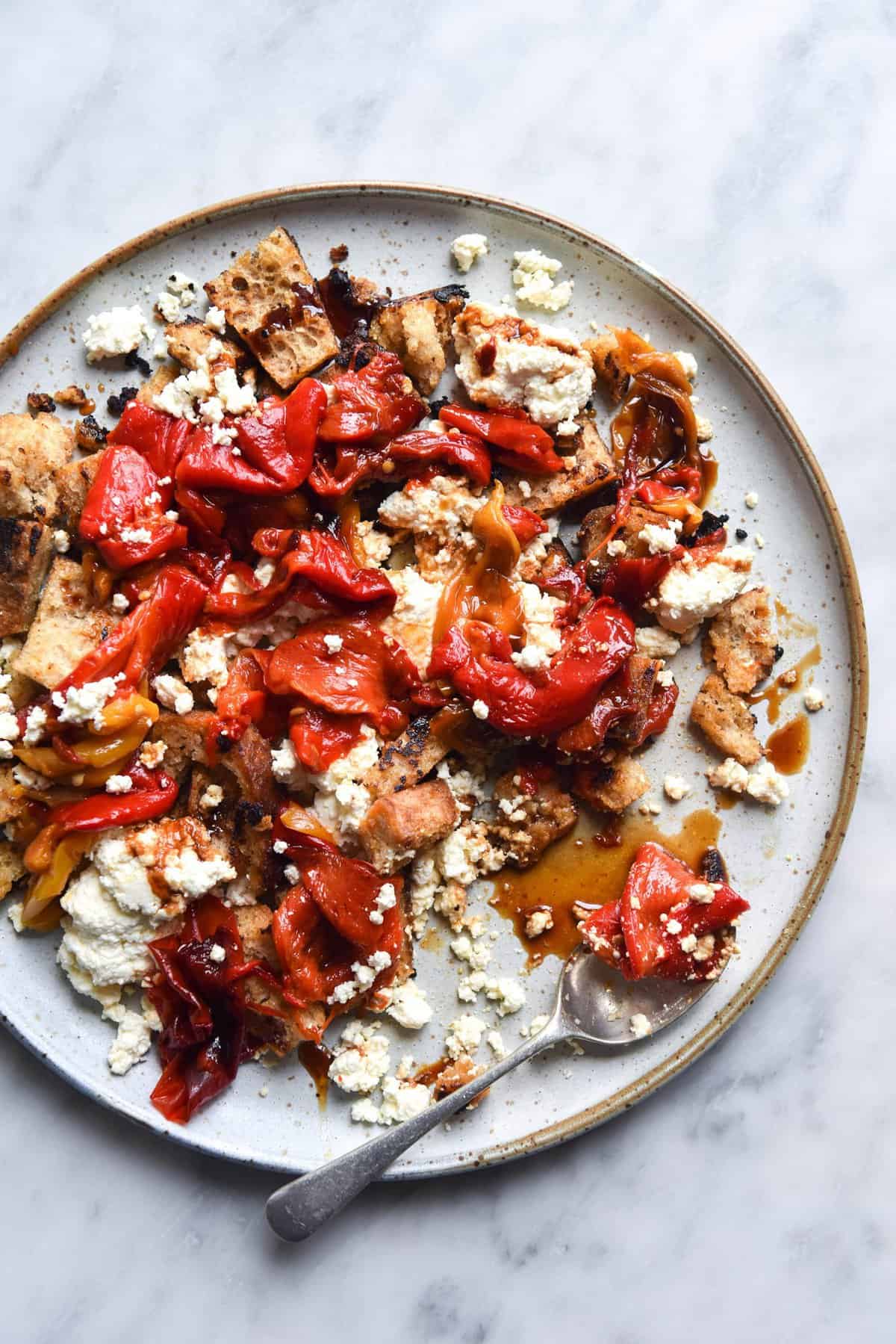
Lactose free (not dairy free) dairy recipes
- The one that started it all: lactose free ricotta.
- My personal new favourite: lactose free paneer.
- Lactose free mascarpone (because Tiramisu season is on it’s way)
- A lactose free condensed milk (and a vegan version)

Recipes to use your lactose free cottage cheese in
- This super filling protein heavy kale pesto pasta sauce.
- Stay tuned for a whipped cottage cheese salad dressing.
- Smear it on a gluten free bagel topped with cucumber slices.

Lactose free cottage cheese
Ingredients
- 2 litres (2000ml) full cream lactose free milk
- 1/2 cup (125ml) lemon juice or white vinegar
- 1/4-1/2 teaspoon fine salt to taste
- 3-6 tablespoons (60-125ml) full fat lactose free cream (see notes)
Instructions
- Place the milk in a large pot over a small burner on a low heat. Very gently bring the milk up to just below a simmer – about 10-15 minutes. Use a spatula to stir occasionally and prevent the milk on the bottom from burning.
- Once the milk is gently bubbling, turn the heat off and remove from the heat and the stove. Add the lemon juice. Stir gently, only just to distribute the acid in the milk. Allow to sit for 15 minutes – the mixture should have curdled and become obvious ‘curds and whey.’ There should be white bouncy curds and a semi-transparent lemon coloured liquid.
- If the liquid is still milky and completely opaque, return the pot to a gentle heat until it begins to separate, and then take it off the heat again.
- Once you have left the mixture to sit for 15 minutes, the mixture should have obviously separated into the two distinct elements – the white curds and the lemon coloured whey. Gently pour the curds through a sieve lined with muslin cloth or a nut milk bag. You can discard the whey or use it in smoothies or baking.
- Bundle up the curds in the nut milk bag and give them a rinse under cold water. Once cool enough to handle, use gentle pressure to squeeze the excess liquid off the curds. They don’t need to be drained for long.
- Transfer the curds into a mixing bowl. Add the salt and then cream until you reach your desired consistency. Stir gently and carefully to prevent breaking up the small chunks of curd (for an authentic looking cottage cheese).
- Once you’re happy with the consistency, check for seasoning and store in an airtight container. Keeps for a few days in the fridge.
Notes
- You can use a full fat lactose free yoghurt in place of the cream, if you prefer. Just be aware that yoghurt might add a tang to the cottage cheese that isn’t traditional. Choose a plain, non sweetened yoghurt and ideally not Greek yoghurt (because of the tang).
- You can also use full fat lactose free milk to thin out the curds, if you like. It won’t be as rich as the cream based version but it works in a pinch.
- This recipe can easily be scaled up or down.
- The quantity this makes depends hugely on how much you strain the curds after separating them from the whey. It also depends on how much cream or yoghurt you decide to add and how thick that product is. I have made batches that (after adding cream) weighed anywhere from 400-550g. If you are making a recipe with a large quantity of cottage cheese needed, I would recommend making a 3 litre batch to ensure you have enough.

Can I use FairLife milk in this receipe?
We don’t have that in Australia so I have never tested the theory. I’m not sure how the filtration and higher protein content would change the process of separating curds and why.
If you do try it let me know how it goes! I’d be very interested to hear